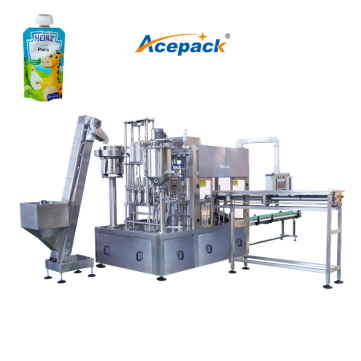In the rapidly evolving landscape of modern manufacturing, filling and capping machines have assumed a pivotal role, transforming packaging operations across diverse industries such as food, beverages, pharmaceuticals, and personal care. These sophisticated devices not only enhance production speed and accuracy but also ensure product integrity and consumer safety, thereby underpinning the success of numerous brands worldwide.

The Automation Revolution
The advent of automation has been a game-changer for filling and capping processes. These machines leverage advanced robotics, precision sensors, and sophisticated software to handle a wide range of container sizes, shapes, and materials with unparalleled efficiency. By automating repetitive tasks, these systems alleviate human error, reduce labor costs, and free up personnel for more value-added activities, ultimately boosting overall productivity.
Precision and Consistency in Packaging
One of the defining attributes of filling and capping machines is their precision. Equipped with adjustable filling nozzles and capping heads, these devices ensure that each container is filled to the exact specified volume and sealed tightly, preventing leaks and preserving product freshness. This consistency is crucial for maintaining brand reputation, meeting regulatory standards, and ensuring consumer satisfaction.
Versatility and Customization
The versatility of filling and capping machines makes them highly adaptable to various product lines and packaging formats. Manufacturers can configure these machines to accommodate different container sizes, shapes, and materials, enabling seamless transitions between product runs. Furthermore, customization options such as integrated labelers, tamper-evident caps, and specialized filling technologies cater to the unique needs of niche markets, fostering innovation and differentiation.
Sustainability and Cost-Effectiveness
In an era marked by environmental concerns and cost pressures, filling and capping machines contribute to more sustainable and economically viable packaging operations. By optimizing filling processes and minimizing overfill, these devices reduce material waste and product loss. Additionally, their long operational lifespan and low maintenance requirements translate into lower overall costs, enhancing profitability and competitiveness.
The Role of Technology in Future Innovations
The integration of cutting-edge technologies, including IoT, AI, and machine learning, is poised to revolutionize filling and capping machines further. Real-time monitoring and predictive maintenance capabilities will enable manufacturers to preemptively address potential issues, minimizing downtime and enhancing equipment reliability. Moreover, smart sensors and data analytics will facilitate enhanced process control, quality assurance, and traceability, ensuring that each product meets the highest standards of quality and safety.




